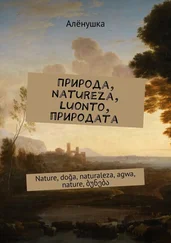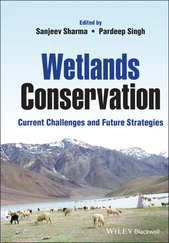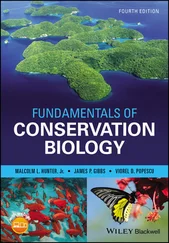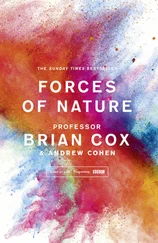Thirty years on, that world has changed utterly. Conservation has become a much more pluralist activity involving many sectors of society, both official and voluntary. It has broadened out from its original base in natural history to address fundamental issues like the future of the countryside and the claims of the urban majority on how land is used, and whether we should be allowed open access to it. It has become ever more difficult to say where nature conservation ends and concern about our own futures begins. Indeed, the very phrase nature conservation means something different today. It is now shot through with fashionable concerns like sustainability, animal rights and habitat creation, some of which might have baffled the conservationists of the 1960s, whose perceptions were rooted more in natural sciences and the development of institutions.
Nature Conservation in Britain (1969). The dust jacket designed by Clifford and Rosemary Ellis was inspired by the Abbotsbury swannery in Dorset, Britain’s oldest bird sanctuary.
Even so, many of the things Dudley Stamp was writing about are still with us. We still conserve wildlife by setting up nature reserves, or designating private land as Sites of Special Scientific Interest. What has changed more is the scale of the resources brought to bear on protecting nature. Bodies like the RSPB and National Trust have more members than any of the political parties or trades unions. Money has flowed into the business (as it has become) from the Heritage Lottery Fund, tax credits and the EU LIFE fund. We stand on the verge of a major shift of agricultural subsidies from food production to sustainable land use. If I was writing this book from the perspective of conservation bodies, that is, in terms of wealth and influence, it would be a story of unalloyed success. Instead, I have chosen to write it, as far as possible, from the more awkward perspective of wildlife. I try to assess to what extent all this power and money has benefited British wildlife, and how far the undoubtedly frenetic activity of the recent past has translated into policies that improve the lot of rare and declining species and wild places. Is the countryside in better shape today than in 1969? Do we have more wildlife now than we had then? Perhaps we should have. The population has hardly grown in that time, and the polluting industries of the 1960s have either cleaned up their acts or disappeared. Persistent pesticides are no longer widely used. And yet the statistics show a steady loss of habitats and species. Although in some ways land use has become more environment-friendly, a short walk with open eyes almost anywhere in Britain is a good antidote to the wilder claims of the prophets of the ‘Things are Much Better Now’ school.
Writing about the conservation product rather than the process poses an interesting problem. The documents of the conservation industry tend to be aspirational: they tell us, sometimes in impenetrable gobbledegook, sometimes in talk-down, creepy-vicar homilies, what ought to happen and what they would like to happen, but all too often do not tell us what actually happened. The emphasis tends to be on the means – plans, strategies, partnerships – rather than the ends. The Nature Conservancy and the NCC did sometimes review events from the standpoint of ecology and wildlife, but their successors seem much more interested in talking up their ‘achievements’. It is rare nowadays that a body tries to take an objective view and balance success and failure. A certain caution about the claims of conservationists is therefore healthy, and wise.
The conservation story would not make sense without a description of the main players, their basic beliefs and actions, and the historical framework against which decisions are taken. I therefore planned this book in three sections. The first concerns the main players, the official agencies, the successors of Dudley Stamp’s Nature Conservancy, and the voluntary bodies, and is also about how our wild places are protected. The second is about the playing field itself – the environment in which our wild species live, and what we have done with it over the past half century. The third is about species, especially those we know about and have polices for: the big ones, rare ones and new arrivals. The main text is topped by an introduction summing up the state of our wildlife at the start of the new millennium, and tailed by a look at where current trends might be taking us. I have not felt it necessary to review every wild habitat in detail; for example, I have not devoted much space to river engineering and floodland, partly because that has been done so well already by Jeremy Purseglove in his prize-winning book Taming the Flood (1989). Because this book is about the natural world, I have little to say about the human environment – food, renewable resources, radiation, ozone, carbon dioxide – nor ‘wider countryside’ issues such as access and recreation, except where they affect wild species and living communities. On the other hand, there is a lot about trees, flowers and birds, and, I hope, not too much conservation jargon.If it has an emergent theme, it might be the gap between aspiration and achievement. The political and physical conditions of a crowded island make the conservation of nature extraordinarily difficult, and wildlife survives largely despite us.
I am lucky to have friends in the business who agreed to cast their eyes over what I had written and put me straight on things, especially Desmond Thompson, James Robertson, Gary Mantle and Graham Bathe. I am grateful also to the three national conservation agencies, English Nature, SNH and CCW for the loan of photographs and other material, and for their patience in answering my queries. Among other bodies that helped in some way are the JNCC, Heritage Lottery Fund, the Countryside Agency and the Wildlife Trusts partnership, especially my own trust, the Wiltshire Wildlife Trust, as well as the RSPB, BTO, WWF-UK and the Marine Conservation Society. My old friend Bob Gibbons came to my rescue in the last-minute scramble for pictures with great generosity. My faithful Maureen Symons processed the script with her usual speed and cheerfulness, and Isobel Smales turned it into illustrated pages with sensitivity and intelligence. Thanks also to Myles Archibald at Collins for making it all possible. My old colleague and friend Derek Ratcliffe read the whole draft, and his comments, on the main themes as well as the detail, were most valuable. He would not necessarily agree with everything in it, but writing this book put me constantly in mind of Derek’s unique contribution to the protection of wildlife in Britain, and I am proud to dedicate this book to him.
Peter Marren Ramsbury, January-June 2001
1 Introduction: Where We Are Now
Wildlife in a crowded island
In his classic book, Nature Conservation in Britain (1969), Sir Dudley Stamp began with the world population. By the mid-1960s, wildlife shared the planet with 3,400 million human beings. Thirty years later that number had grown to 5,292 million. Today Asia alone holds most of the world population of the mid-1960s. In 2000, we broke the six billion mark. The United Nations forecast for 2050 is 9,833 million people; if so, in a single century the human population will have nearly trebled.
In Great Britain, by contrast, the population growth is slow. In 1921, nearly 43 million people lived on our island. In 1965, despite the postwar ‘baby boom’, the population had increased by only 19 per cent to 53 million. Today it stands at 57 million and is virtually static. Our population explosion happened early, in Victorian times. In the developing world, most people are young. In Britain we have an ageing population. Mr and Mrs Average will have 2.1 children and will live well into their seventies. If the size of the human population were all that mattered, the countryside and its wildlife would have been under remarkably little pressure in the twentieth century, except around a few cities, mainly in south-east England.
Читать дальше











![Various - Birds and Nature, Vol. 12 No. 5 [December 1902]](/books/745517/various-birds-and-nature-vol-12-no-5-december-thumb.webp)
![Various - Birds and Nature Vol. 11 No. 2 [February 1902]](/books/745533/various-birds-and-nature-vol-11-no-2-february-1-thumb.webp)